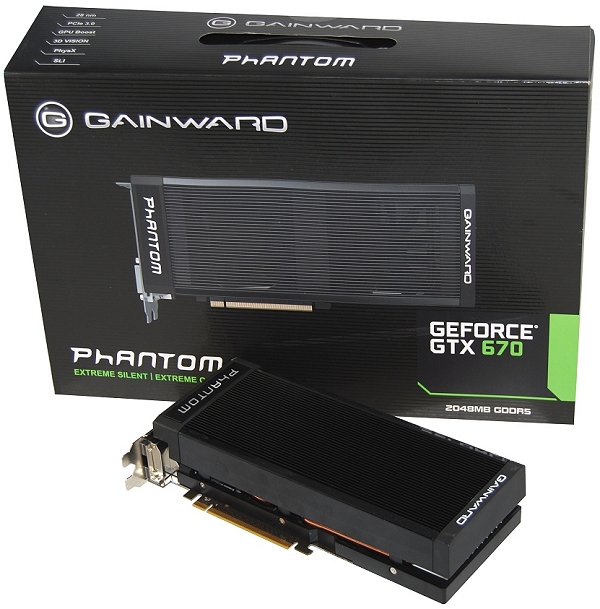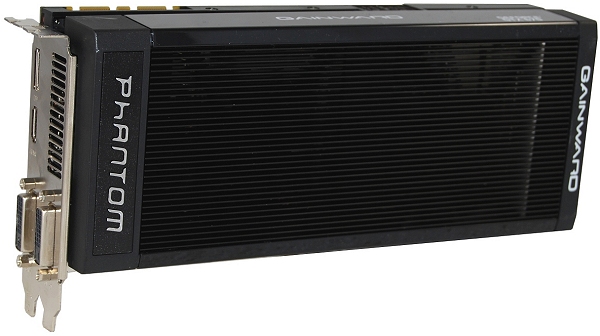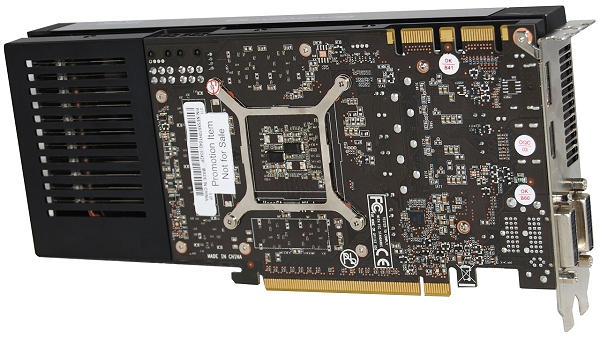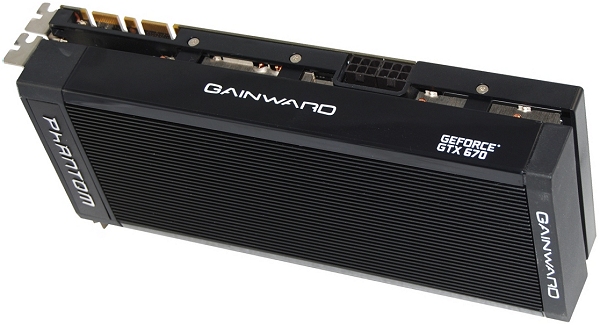Gainward GeForce GTX 670 Phantom Review
After many months of talking upward its latest architecture, Nvidia reclaimed the single-GPU performance crown with its GeForce GTX 680, which outpaced the Radeon HD 7970 by well-nigh 7% in our tests. Kepler'due south arrival forced AMD to slash prices across its Southern Islands lineup, including a $70 drop on the HD 7970, putting it at $479 or about 4% cheaper than the GTX 680's MSRP of $499.
The HD 7950 besides took a $lx cut to $399, making it 1 of the most tempting 7000 serial cards considering it has no equal -- or had no equal, we should say. Continuing Kepler's rollout, Nvidia has unveiled the GTX 670, which is priced confronting the Hard disk drive 7950 at $399. Despite being $100 cheaper than the GTX 680, the GTX 670 doesn't announced to be much slower on newspaper, and that could spell disaster for AMD.

The GTX 670 shares the GTX 680's DNA, as it's powered past the same GK104 GPU and has many other similarities. For example, it uses 2GB of GDDR5 memory clocked at 6GHz and features the new SMX units and GPU Boost technology. Although it's targeting the HD 7950's pricing, Nvidia says its crosshairs are actually on the HD 7970 in terms of performance. Again, a scary notion for AMD.
All this posturing means very picayune if gamers can't actually buy GTX 600 series products. It'due south been nearly two months since the GTX 680 launched, simply as of writing, you can't purchase one online. Poor availability non only ways that it's hard to find a GTX 680, just it besides ways many people accept paid more than the $499 MSRP, which dents the card's full value potential.

We hope Nvidia solves this shortly, especially if the GTX 670 is everything information technology'south chalked up to be...
Gainward's GTX 670 in Detail
Having recently reviewed Gainward's GeForce GTX 680 Phantom, nosotros're pleased to be looking at the company's premium version of the GTX 670. The Phantom edition carte boasts a reworked PCB with an upgraded ability phase, factory overclocking and a massive triple slot libation. Gainward used the GTX 680 to introduce its second-generation Phantom cooler, and the GTX 670 receives the same handling.
The GTX 670'due south Phantom heatsink measures 185mm long, 70mm wide and 17mm tall (7.28in x 2.75in x 0.66in), making it considerably smaller than the GTX 680's 225mm x 70mm x 40mm heatsink. It has a black fan shroud that forces the 80mm fans to draw air in through the grill above them and push it over fins below.

Although the smaller heatsink surprised us, nosotros're more shocked at how compact the GTX 670 Phantom's PCB is. Without a cooler, information technology measures only 17.3cm (half dozen.81in) long, making the shortest loftier-operation graphics carte nosotros've seen. To put this in perspective, the Radeon HD 6450 as well measures 17cm and that'southward an ultra-low-end HTPC card. With the heatsink and shroud installed, the GTX 670 Phantom is 24.3cm (9.56in) long, which is even so slightly shorter than the GTX 680's 25.5cm body.

You'll notice some layout changes between the GTX 670 and 680. Nvidia moved the power supply to the west side of the GPU (much closer than on traditional boards), then rotated the scrap to amend ability integrity and increase efficiency. With the GTX 670's power circuitry moved to the other side of the board, the right side of the PCB was empty and thus removed to salve infinite.

Whereas the GTX 680 Phantom had a big heatspreader that covered its unabridged PCB to absurd the GDDR5 memory and 6-phase power, the GTX 670 Phantom abased this design. Instead, the GDDR5 retention is naked while the ability phase is cooled past a split up aluminum heatsink.
Gainward also performed a niggling manufacturing plant overclocking, but before we talk clock speeds, let's explore the GTX 670'south GPU in a little more detail. The card ships with 1344 CUDA cores and 7 SMX units, i SMX unit of measurement and 192 CUDA cores less than the GTX 680. There are also slightly less TAUs, 112 down from 128, while the ROPs remain at 32.

The memory subsystem is identical to the GTX 680, consisting of four 64-chip controllers (256-bit) with 2GB of GDDR5 memory clocked at 6008MHz (DDR). The memory bandwidth remains at 192.2GB/south.
Nvidia's specification for the base of operations clock frequency is 915MHz while the boilerplate Heave Clock speed is 980MHz. Gainward has increased the base clock frequency to 1006MHz, while the memory operates at 6108MHz, boosting the bandwidth to 195.5GB/due south.

The rest of Gainward's menu remains fairly standard, including a pair of SLI connectors, 6-pin and 8-pin PCIe ability connectors, and an I/O panel configuration consisting of HDMI, DisplayPort and two DVI ports.
Source: https://www.techspot.com/review/529-geforce-gtx-670/
Posted by: greenwassurs.blogspot.com


0 Response to "Gainward GeForce GTX 670 Phantom Review"
Post a Comment